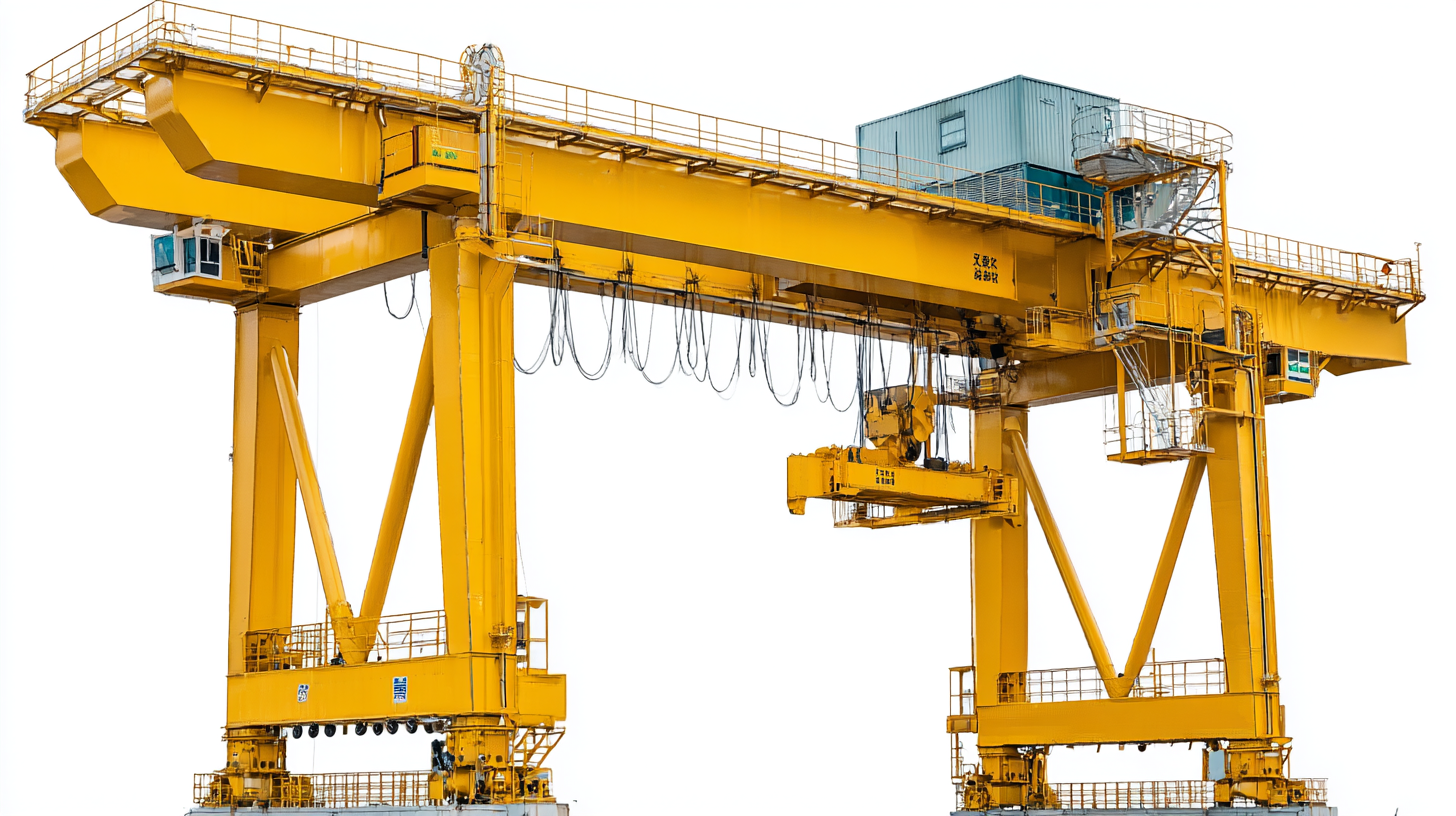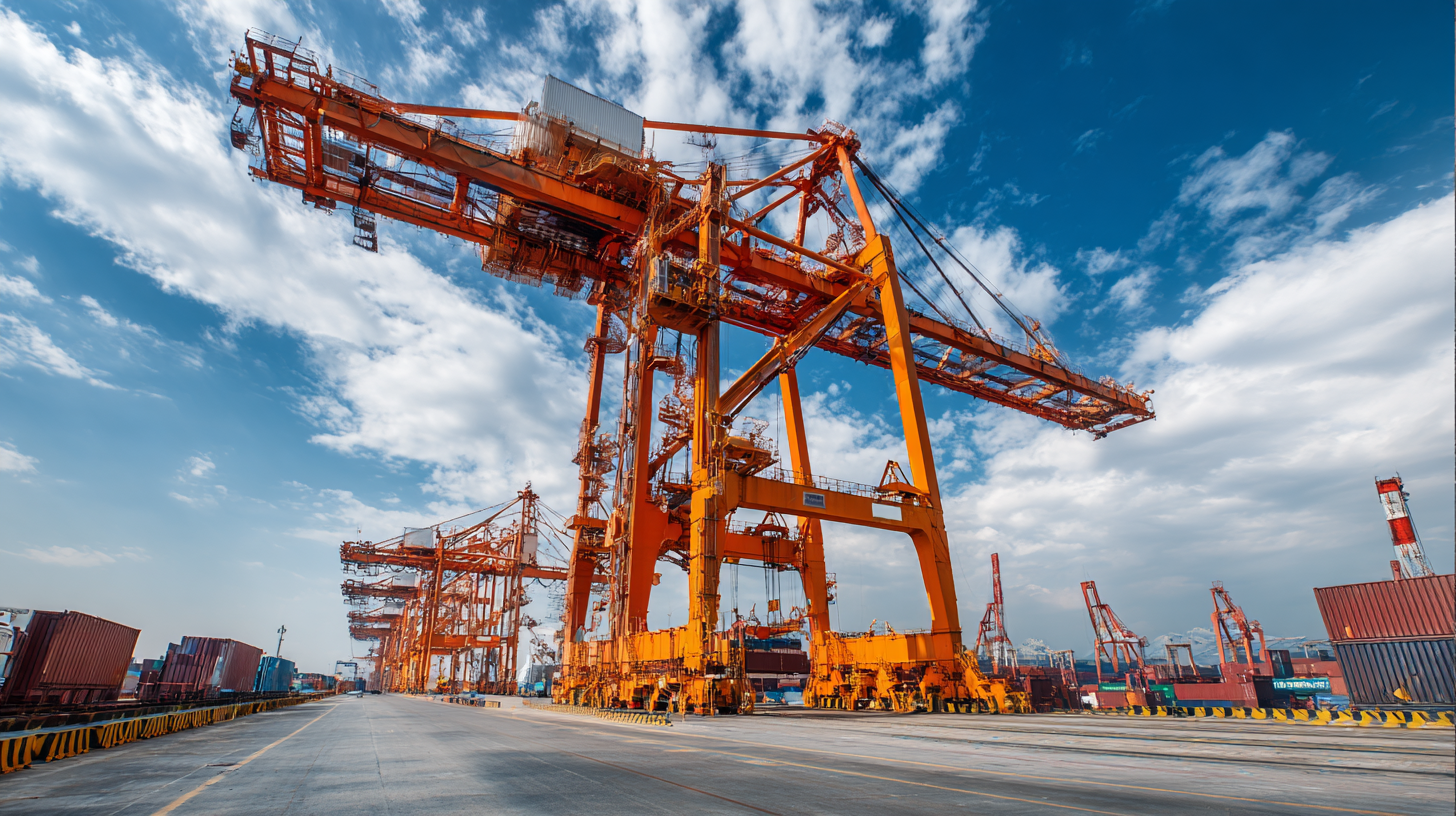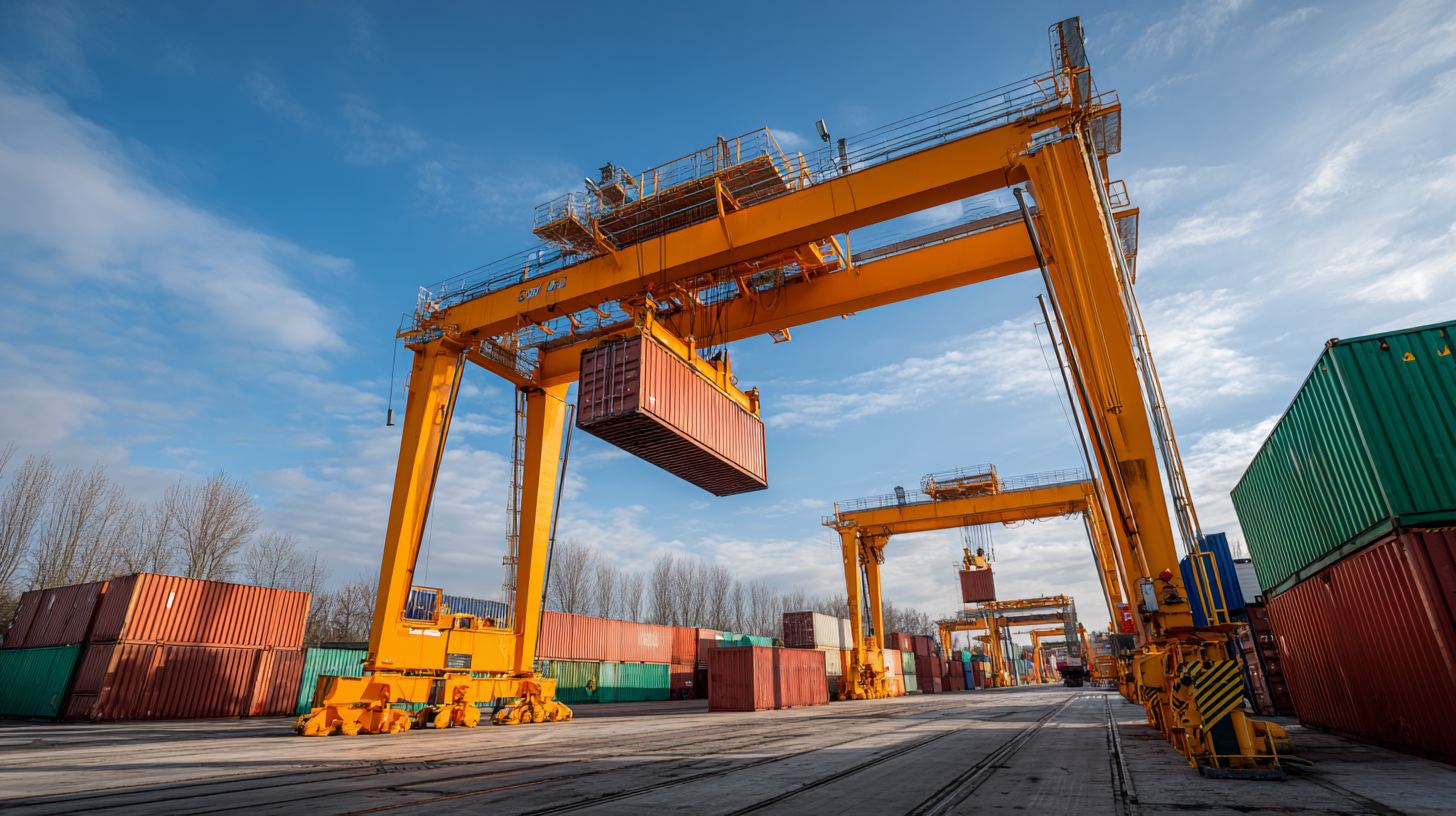Navigating Challenges in Sourcing the Best Portable Gantry Crane: Key Issues and Industry Insights
When it comes to lifting and transporting heavy loads in various industrial settings, the Portable Gantry Crane stands out as a versatile and efficient solution. However, sourcing the best portable gantry crane can often be a daunting task, particularly with the multitude of options available in the market. The key to making an informed choice lies in understanding the various challenges and intricacies involved in the selection process. This blog will delve into critical issues such as assessing manufacturer quality, identifying specific operational needs, and navigating industry insights that can significantly impact performance and safety. Drawing on expert opinions and practical tips, we aim to guide you through the vital considerations that will empower you to choose a high-quality portable gantry crane that meets your unique requirements.

Understanding the Market Demand for Portable Gantry Cranes: Key Statistics and Trends
The portable gantry crane market has witnessed significant growth, driven by
increasing demand across various industries. According to a recent report by Research and Markets, the global
portable gantry crane market is projected to reach USD 1.12 billion by 2025,
expanding at a CAGR of 6.3%. This growth is attributed to the rising need for efficient material handling solutions
in sectors such as construction, manufacturing, and shipping, where
mobility and adaptability of cranes are crucial.
Key statistics indicate that over
60% of manufacturers are now prioritizing lightweight yet durable designs to enhance
portability while maintaining load capacity. In addition, the surge in industrial automation and logistics activities
has further propelled market expansion, with a noticeable uptick in e-commerce requiring more streamlined
supply chain processes. Notably, the North American
region remains a dominant player, accounting for approximately 35% of the portable gantry crane market share.
Understanding these trends is essential for industry stakeholders looking to navigate the challenges in sourcing
the most effective portable gantry cranes.

Evaluating Load Capacity: Choosing the Right Gantry Crane for Your Needs
When selecting a portable gantry crane, evaluating load capacity is crucial to ensure you choose the right model for your specific needs. According to a report by Allied Market Research, the global market for crane equipment, including gantry cranes, is projected to reach $45 billion by 2025, primarily driven by increased demand in construction and manufacturing sectors. It is essential to assess the maximum load capacity that corresponds not only to the weights you typically handle but also allows for a safety margin. For example, if your operation frequently requires lifting loads up to 2 tons, opting for a gantry crane with at least a 2.5-ton capacity can mitigate risks associated with overloading.
Moreover, different materials and designs influence the load capacity of gantry cranes. Steel cranes typically offer higher load capacities compared to aluminum alternatives. According to a study by the American Society of Mechanical Engineers, steel gantry cranes can handle loads exceeding 10 tons, while portable aluminum models generally cater to lighter loads, often capped around 2 tons. It’s also vital to consider the environmental conditions of usage, as outdoor operations may necessitate cranes with enhanced durability and weather-resistant features. This comprehensive evaluation of load capacity and material choice can significantly impact the efficiency and safety of your operations.

Material and Durability Factors: The Impact on Gantry Crane Longevity
When sourcing a portable gantry crane, understanding the material and durability factors is crucial for ensuring longevity and efficiency. The choice of materials not only affects the weight-bearing capacity of the crane but also its resistance to wear and environmental factors. Steel is often favored for its robustness, but the specific type—be it painted, galvanized, or stainless steel—plays a significant role in how well the crane will perform in various settings. High-quality components can prevent issues before they arise, ensuring smooth operation and reducing downtime.
Moreover, recent challenges in overhead crane functionality, such as brake wheel failures caused by circular surface defects, highlight the need for attention to detail in both design and manufacturing processes. These defects can lead to safety hazards, directly impacting operational efficiency. Selecting cranes with proven durability and reliable braking systems is essential to mitigate such risks and enhance overall safety in industrial environments. In this context, focusing on the material and craftsmanship of portable gantry cranes can lead to improved performance and extended service life.
Compliance and Safety Standards: Ensuring Your Portable Gantry Crane Meets Regulations
When sourcing a portable gantry crane, one of the foremost concerns is ensuring compliance with safety standards and regulations. According to a report by the Occupational Safety and Health Administration (OSHA), nearly 1 in 10 construction site injuries involve cranes, highlighting the necessity for equipment that adheres to stringent safety guidelines. Compliance with American National Standards Institute (ANSI) standards, particularly ANSI/ASME B30.17, is crucial for portable lifting devices. This standard mandates specific design, construction, and testing protocols to minimize risks during operation.
Furthermore, assessing the crane's weight capacity and operational limits is essential. The Crane Manufacturers Association of America (CMAA) indicates that improperly used cranes are a leading cause of job site accidents. Therefore, businesses must ensure that their portable gantry cranes not only meet regulatory standards but are also adequately equipped to handle the required loads. Investing in models that exceed minimum specifications can provide added safety as well as mitigate liability concerns. By prioritizing compliance and safety, companies can enhance workplace safety and improve operational efficiency.
Navigating Challenges in Sourcing the Best Portable Gantry Crane: Key Issues and Industry Insights
| Aspect | Description | Importance | Compliance Standards |
|---|---|---|---|
| Load Capacity | The maximum weight the gantry crane can safely lift. | Crucial for operational safety and efficiency. | OSHA, ANSI |
| Material Quality | The strength and durability of materials used in construction. | Directly impacts lifespan and safety. | ISO 9001 |
| Design Configuration | The structure and layout of the gantry crane. | Important for maneuverability and stability. | ASME B30.17 |
| Mobility Features | Wheels, casters, or tracks that aid in movement. | Enhances efficiency in various work environments. | ANSI/ITSDF B56.1 |
| Safety Features | Emergency brakes, limit switches, and stabilizers. | Essential for reducing the risk of accidents. | OSHA, ANSI |
Cost-Benefit Analysis: Investing Wisely in Portable Gantry Cranes for Various Applications
Investing in portable gantry cranes presents both opportunities and challenges, particularly when it comes to cost-benefit analysis. While these versatile structures provide outstanding mobility and adaptability for various applications, the initial investment can be significant. Therefore, it is essential for businesses to carefully evaluate their specific needs and the potential return on investment (ROI). Factors such as workload, frequency of use, and operational environment should be considered to determine if the expenditure is justified over time.
Moreover, the long-term benefits of portable gantry cranes often outweigh their upfront costs. These cranes can enhance productivity by streamlining lifting operations, reducing labor costs, and minimizing downtime. Additionally, businesses that rely on these cranes for multiple projects can see significant savings in operational efficiency. By analyzing the overall operational costs and the value gained from increased efficiency, companies can make informed decisions that align with their financial goals and specific lifting requirements. Ultimately, strategic investment in portable gantry cranes can lead to improved organizational performance across various sectors.
Navigating Challenges in Sourcing the Best Portable Gantry Crane
This chart illustrates a cost-benefit analysis comparing various applications of portable gantry cranes, showcasing their investment worthiness in different operational contexts.
